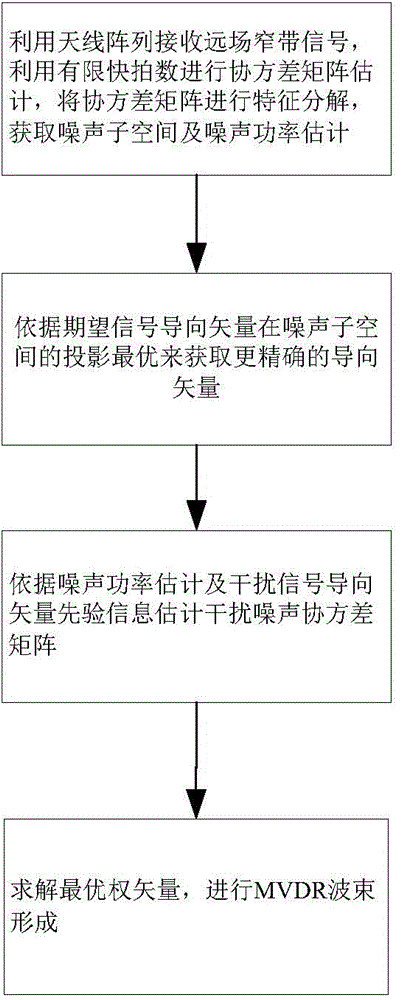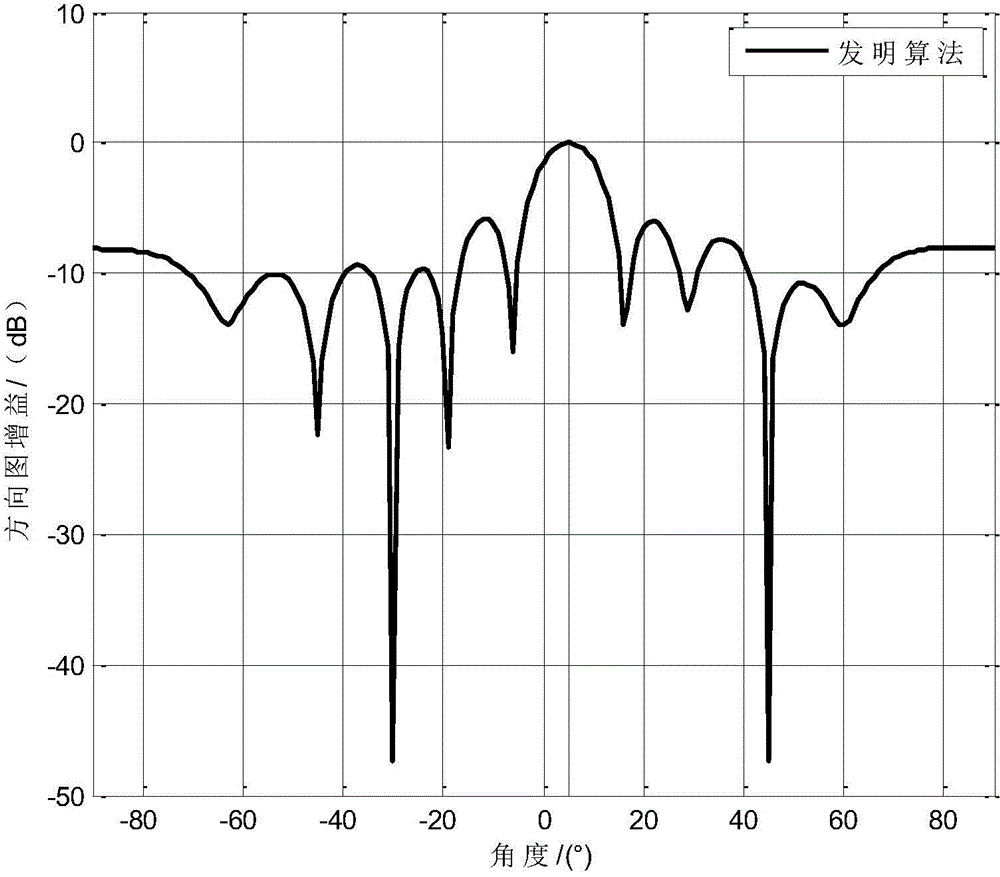A method for forming steady beam based on interfering noise covariance matrix estimation
A technology of covariance matrix and interference noise, which is applied in the field of adaptive beamforming, can solve the problems of expected signal vector error, performance degradation, array element inconsistency, etc., and achieve high array output signal-to-interference-noise ratio, and array output performance degradation Obvious, strong robustness effect
- Summary
- Abstract
- Description
- Claims
- Application Information
AI Technical Summary
Problems solved by technology
Method used
Image
Examples
Embodiment Construction
[0045] The present invention will be further described below in conjunction with the accompanying drawings.
[0046] In order to avoid signal cancellation, the present invention proposes a robust adaptive beamforming method based on interference noise covariance matrix estimation. For the case where the incident signal is a far-field narrow-band independent signal and the noise is Gaussian white noise, the method needs to know prior information such as the number of incident signal sources and the steering vector of the incident signal. The specific steps are as follows:
[0047]Step 1: Use the antenna array to receive far-field narrow-band incident signals, take a limited number of snapshots to estimate the covariance matrix of the received data, then perform eigendecomposition on the covariance matrix of the received data, and obtain noise based on the prior information of the number of incident signal sources Subspace U n and estimated noise power The prior information o...
PUM
 Login to View More
Login to View More Abstract
Description
Claims
Application Information
 Login to View More
Login to View More - R&D
- Intellectual Property
- Life Sciences
- Materials
- Tech Scout
- Unparalleled Data Quality
- Higher Quality Content
- 60% Fewer Hallucinations
Browse by: Latest US Patents, China's latest patents, Technical Efficacy Thesaurus, Application Domain, Technology Topic, Popular Technical Reports.
© 2025 PatSnap. All rights reserved.Legal|Privacy policy|Modern Slavery Act Transparency Statement|Sitemap|About US| Contact US: help@patsnap.com



